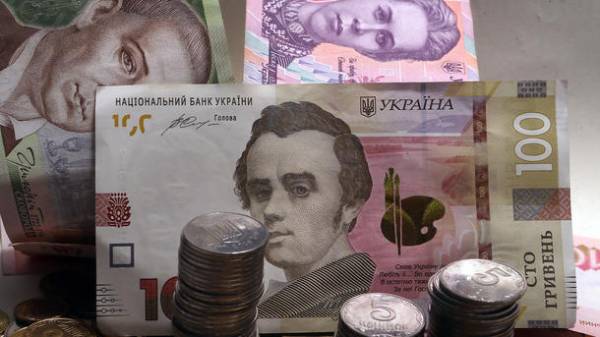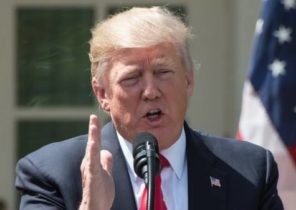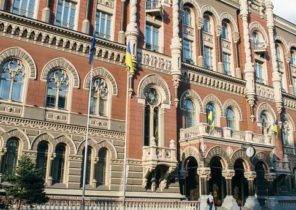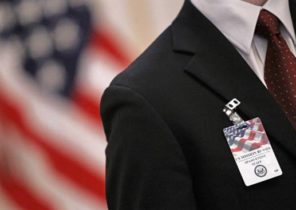
Economists believe that interest rates on loans and deposits will decrease and torque will be more or less stable, without sharp fluctuations. But analysts advise Ukrainians not to relax, because nobody cancels the old-new challenges for our economy. “The key force majeure continues for Ukraine — military operations in the Donbass and the probability of a crisis in China, with falling prices for steel and iron ore. These risks can at any time to hit our economy”, — said finanalitik Vitaly Shapran. But the Executive Director of the Independent Association of banks of Ukraine Olena Korobkova does not exclude that the destabilization of the economy can influence changes in staff in key positions, including NBU: “It always excites the market and have a negative impact on the rate of” (about the possible consequences of the resignation of Gontareva read in a separate article). Also, in her opinion, it is necessary to cooperate with the IMF, because it is a signal to the world community about the implementation in our country of various investment programs.
The dollar will not go beyond 29 UAH/$
Before the summer, the currency will be calm, experts say. “If in the II quarter of 2017, the hryvnia exchange rate will fluctuate in the range of 26-28 against the dollar, it can be considered a normal corridor. The financial market is stable, as the EU gave us a tranche of 600 million euros, and the IMF provided a $1 billion”, — said the chief analyst of rating Agency “Expert Rating” Vitaly Shapran. According to him, the situation with gold reserves of Ukraine look quite optimistic, because in February 2017, their level reached $15.5 billion That is, the national Bank has enough resources to smooth out possible fluctuations of the national currency through foreign exchange auctions.
At the same time, the Executive Director of the Independent Association of banks of Ukraine Olena Korobkova believes that this spring the national currency to fluctuate in a higher range — from 27 to 29 UAH/$. “Despite the fact that natural gas imports will decline due to seasonality, there are several factors that will put pressure on the hryvnia. Due to the economic blockade of the occupied areas of Donbass, Ukraine will have in the coming months to seek alternative sources of coal, which is likely to be more expensive due to transportation costs and, therefore, imports will continue to grow. In addition, the blockade will hurt the steel industry, which accounts for 25% of export earnings. And the consensus forecast suggests that prices for industrial metals will decline. Thus, the condition of Ukraine’s trade balance could deteriorate,” — said Korobkov. However, you should not be afraid of payments on external debt, which this year will be $5.4 billion “In 2017, the payments will not greatly affect the course because of dollar liquidity in the banking system enough. It is not known how to be with a $3 billion debt to Russia, after all, the court according to it, Ukraine is losing. At the moment this story has only a psychological pressure on the exchange rate, because everyone understands that the courts can last for one year,” says Korobkov.
On the market cash advance loans thaw
Supply of credit began to fall in price over a year ago, and this trend has continued this winter. In particular, in the first quarter of 2017, interest rates for loans fell by 1.5—2%. “Today the market is lower interest rates on all types of loan products. In the second quarter may be expected a slight decrease of 0.5%,” — said Valery Malakhov of “Oschadbank”. It is not excluded that this spring some of the banks will offer their customers consumer loans in the national currency is already at a rate of 11-12% per annum. At the same time, Serhiy Mishchenko from “Idea Bank” I am confident that proposals for loans will gradually become cheaper — these classifications affected by the reduction in Deposit rates, increased competition among banks in the lending market.
Currently, the most popular among the population are consumer loans, in particular providing the possibility of registration of payment cards or credit cash. And growth prospects of consumer crediting is very serious, says head of Agency sales of consumer loans Ukrsotsbank Iryna Kozachuk. “Among the customers there is a demand, and banks are ready to meet it. In the first quarter of 2017, the market and credit cards, and cash lending is already quite grown, so the number of lenders and lending will increase,” — said the banker. Meanwhile, Valery Malakhov said that the thaw in the credit market also referred to automobile and mortgage loans: “If we talk about the provision of consumer credits, banks’ claims on credit history and the structure of income of borrower to become more liberal. Have developed new mortgage loan programs, including for migrants from areas ATO. There are special programs under accredited developers. And car loans, banks have reduced the first installment for the purchase of all types of vehicles”.
Deposits cheaper, and trust grows
Spring rates on deposits will continue to decline. “In 2016, the average rate on term deposits of physical persons has decreased from 20% in the national currency at the beginning of the year to 17% at the end of December. This contributed to the stabilization of the economy and the currency market”, — said head of Department of deposits and savings Ukrsotsbank Iryna Strepetova. This trend continues today — interest rates on deposits decreased in hryvnia and foreign currency. “Banks are gradually moving away from the need to attract resources at a high price that is associated with a gradual reduction of the NBU discount rate, a decrease in the number of banks in the market and the need to reduce lending rates. Therefore, in the second quarter of 2017 can be expected a slight decrease in interest rates to 0.5%,” — says Director of retail business Department of “Oschadbank” Valery Malakhov.
In particular, the Director of Department of development of Bank products “Idea Bank” Sergey Mishchenko gives the example that the interest rates on 6-month deposits in the national currency can be reduced to the level of 14.6—15%.
Despite the lower profitability of deposits, returns customer confidence in banks. “The inflow of deposits continues even if the reduction in Deposit rates, although banks were forced to raise rates to keep depositors,” — says Valery Malakhov.
And Sergey Mishchenko said that the return of confidence in the banking system contributes to the guarantee Fund of deposits, as depositors, the victims of insolvent banks regularly receive their compensation. In turn, Iryna Strepetova says: trust in banks has helped to recover and the NBU, which gradually removes currency restrictions. “Today, customers are willing to place funds for a longer period. If the crisis were popular deposits for three months and even weekly, now clients prefer to place money on deposits from six months without the possibility of early termination”.
The sale of state-owned banks hinder “skeletons”
Ukrainians continue to be concerned about the state approves, because in winter the largest “PrivatBank” has received the prefix “state”. And how these perturbations will affect the stability of the economy, is unclear. “For the first time after the collapse of the USSR, the state owns more than 50% of the banking system of the country. Positive: the government can influence the reduction rate. That’s not good investor, accustomed to live on income from deposits, but are encouraging those who take loans,” — says Mykhailo finanalitik ICU demo. Further, the state-owned banks to be sold to private owners, but prevent the privatization of “skeletons in the closet.” “Oschadbank is the state’s obligation to compensate for “burnt” deposits of Ukrainians in the USSR savings Bank. And given what happened in 1996 a 15-fold devaluation of the deposits and paid the amount of the remaining debt of 110 billion UAH. This is more than all deposits in “Oshchadbank”. Legally, these obligations on the state. But, from the investor’s point of view, the debts of the Soviet Bank — risk,” notes demo. In turn, “Privat” was a private, and became a “state” is forced, because “its owners did not want to patch the hole in the Bank their money”.
“The state nationalized the Bank, along with debts, he poured taxpayer funds. And the money of the former shareholders and their business partners (29.4 billion UAH), the state, by law, have written off to cover losses. But they are suing for their money. The risk for the investor in case of positive decision of the courts to return the money he will have,” — says demo. Sale of state-owned banks, likely to take several years. “Their shareholders will be the international financial organizations and investors from Ukraine. But first banks need to deal with the “skeletons in the closet,” notes demo. — This means that while 100% state guarantee on deposits “savings Bank” is stored. And “Ukreximbank” and “PrivatBank” such a status, despite the adoption of the law is not received. Yet government financial support of these banks put their deposits in a row with “asadowskij” reliability”.







